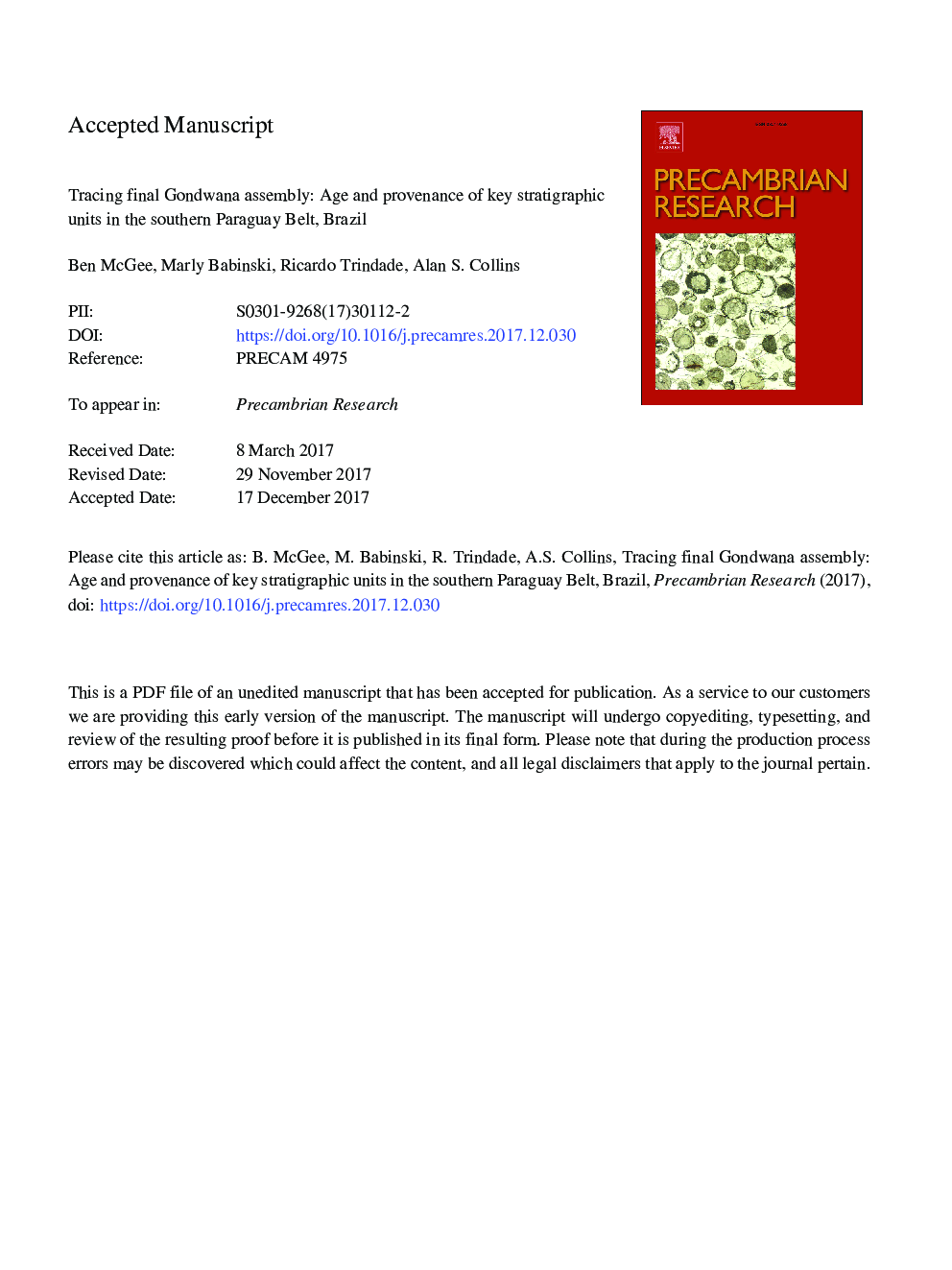| Article ID | Journal | Published Year | Pages | File Type |
|---|---|---|---|---|
| 8912622 | Precambrian Research | 2018 | 79 Pages |
Abstract
The Paraguay Belt in central South America developed in response to the collision between the Amazonian Craton, the Rio Apa Block, the São Francisco Craton and the Paranapanema Block and marks the final suture of western Gondwana. The traditional 'Brasiliano' age (â¼620â¯Ma) of this belt has recently been questioned by evaluation of the geological record of sedimentation, deformation, metamorphism and magmatism, which indicate the closing stages of orogenesis occurred well into the Cambrian. Here we investigate the time of deposition and source areas for the metasedimentary rocks of the Jacadigo and Corumbá Groups overlying the Amazonian and Rio Apa cratons in the southern part of the Paraguay Belt. 1177 LA-ICPMS and 61 SHRIMP detrital zircon U-Pb ages were analysed from samples taken from both the basement and the sedimentary succession. A new maximum age constraint of 686â¯Â±â¯10â¯Ma is presented for the Puga Formation to complement existing work in the region. The youngest ages from our samples are 566â¯Â±â¯8â¯Ma and 543â¯Â±â¯11â¯Ma. These maximum depositional ages indicate that final sedimentation began no earlier than 543â¯Â±â¯11â¯Ma in the southern Paraguay Belt. Given that zircon inheritance in these rocks continues up until this age and that known Amazonian Craton ages are older than â¼950â¯Ma we discuss other potential sources for these sediments by integrating the U-Pb detrital zircon data with Hf isotopic data. Cumulative proportion analysis of our detrital U-Pb data set indicate a transition from a passive to a collisional setting. Our final conclusions are that sedimentation in the belt transitioned from a passive margin environment to a collisional setting, consistent with an ocean to the east of the present-day Amazonian Craton that did not close until the Cambrian.
Related Topics
Physical Sciences and Engineering
Earth and Planetary Sciences
Geochemistry and Petrology
Authors
Ben McGee, Marly Babinski, Ricardo Trindade, Alan S. Collins,
